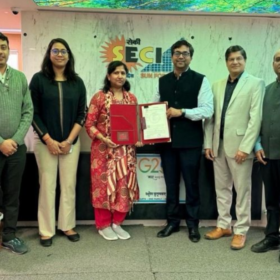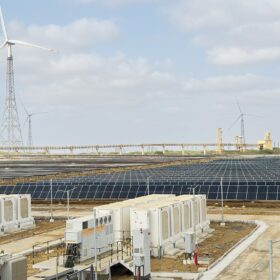As global attention turns to Belém, Brazil, for COP30, the spotlight falls squarely on carbon markets. Over the past decade, these mechanisms have grown from a niche policy tool into a central pillar of climate action. Yet, as the world edges closer to this pivotal conference, the stakes have never been higher. COP30 presents an opportunity not just to discuss emissions trading and offsets, but to define the credibility, relevance, and role of carbon markets in the broader quest for a sustainable future.
The Evolution of Carbon Markets
Carbon markets were conceived as a mechanism to put a price on carbon emissions, creating a financial incentive for organisations and nations to reduce their footprint. Early implementations were primarily compliance-based, designed to help countries and industries meet regulatory obligations. Over time, voluntary markets emerged, allowing businesses and individuals to take responsibility beyond legal requirements. This dual system reflects both ambition and flexibility: compliance markets drive mandatory reductions, while voluntary markets encourage innovation, experimentation, and leadership.
The appeal of carbon markets lies in their simplicity and elegance. By attaching a tangible cost to carbon, these mechanisms reward efficiency and ingenuity. Projects that reduce emissions, from renewable energy initiatives to forest conservation, can generate credits, which are then traded in the market. The theory is straightforward, yet its real-world application is complex. The challenge lies in ensuring that these credits represent genuine, additional reductions that would not have occurred otherwise. The integrity of carbon markets has often been questioned, and COP30 represents a moment to confront these doubts and establish clarity.
Challenges That Demand Attention
One of the most pressing issues at COP30 is credibility. Carbon markets operate on trust: stakeholders must believe that the emission reductions credited are real, measurable, and permanent. Inconsistent methodologies, poorly monitored projects, and a lack of transparency have undermined confidence in certain markets. As discussions advance in Belém, establishing universally accepted standards and accountability frameworks will be essential. The conference is an opportunity to move from aspiration to action, from promise to practice.
Another critical concern is balance. Carbon markets cannot, and should not, be a substitute for direct emission reductions. Offsetting must complement, rather than replace, domestic mitigation efforts. The world’s most ambitious climate targets of limiting global warming to well below 2°C require systemic changes across energy, transport, industry, and agriculture. Carbon markets can accelerate this transition, but they cannot be the sole instrument. COP30 provides a platform for aligning market mechanisms with broader climate policy, ensuring that they enhance, rather than detract from genuine emission reduction efforts.
The Role of Nature-based Solutions
Nature-based solutions are likely to feature prominently at COP30. Forest conservation, regenerative agriculture, and biodiversity protection not only sequester carbon but also support ecosystems, water cycles, and local communities. Integrating these solutions into carbon market frameworks presents both opportunities and complexities. Properly designed, they can offer multiple benefits: climate mitigation, social empowerment, and environmental restoration. Yet, they demand rigorous monitoring and robust governance to ensure that credits represent real, lasting impacts. COP30 will be a forum to explore how such approaches can be scaled, verified, and integrated into market mechanisms effectively.
Leadership and Global Integration
Brazil’s role as host is significant. The country has long positioned itself as a leader in nature-based climate solutions and carbon market discussions. Hosting COP30 is more than ceremonial: it signals Brazil’s intent to shape global discourse, encourage cooperation, and foster a practical framework for integrating carbon markets internationally. Effective markets depend on trust and harmonisation. Alignment between voluntary and compliance markets, and between national and international frameworks, can create clarity, reduce duplication, and enhance market efficiency. COP30 offers a stage for such discussions, fostering collaboration across nations and sectors.
Equally important is the involvement of the private sector. Corporations increasingly recognise that sustainability is intertwined with long-term competitiveness. Many are investing in emission reduction projects, committing to net-zero targets, and participating actively in voluntary carbon markets. COP30 is an opportunity to bridge public and private ambitions, aligning policy with investment, and creating mechanisms that are both credible and financially sustainable.
Looking Ahead
COP30 is more than a meeting of diplomats and negotiators; it is a moment to reflect on what carbon markets can and should achieve. It is a space to address shortcomings, affirm best practices, and signal global commitment to effective climate action. The decisions made in Belém will reverberate far beyond the conference halls, influencing market behaviour, investment flows, and the credibility of climate action worldwide.
Ultimately, carbon markets are a tool. Their success will depend not on rules alone, but on vision, leadership, and integrity. COP30 is an opportunity to ensure that markets support the transition to a low-carbon world, delivering both environmental benefits and economic opportunities. By fostering transparency, encouraging innovation, and embedding social and environmental safeguards, these markets can move from concept to practice, from promise to measurable progress.
As nations gather in Brazil, the world will be watching. The path ahead is challenging, but the potential for meaningful action has never been greater. COP30 may well define the next decade of carbon markets, establishing principles that will guide climate action for years to come. For those invested in the planet’s future, the outcomes of this conference will be pivotal.
The views and opinions expressed in this article are the author’s own, and do not necessarily reflect those held by pv magazine.
This content is protected by copyright and may not be reused. If you want to cooperate with us and would like to reuse some of our content, please contact: editors@pv-magazine.com.








By submitting this form you agree to pv magazine using your data for the purposes of publishing your comment.
Your personal data will only be disclosed or otherwise transmitted to third parties for the purposes of spam filtering or if this is necessary for technical maintenance of the website. Any other transfer to third parties will not take place unless this is justified on the basis of applicable data protection regulations or if pv magazine is legally obliged to do so.
You may revoke this consent at any time with effect for the future, in which case your personal data will be deleted immediately. Otherwise, your data will be deleted if pv magazine has processed your request or the purpose of data storage is fulfilled.
Further information on data privacy can be found in our Data Protection Policy.